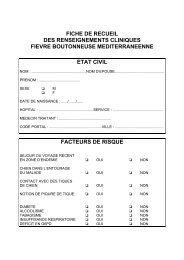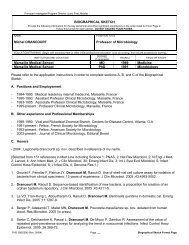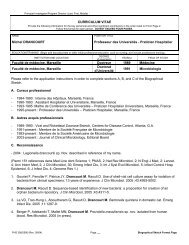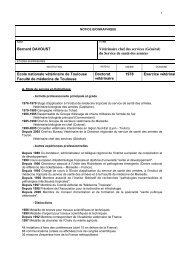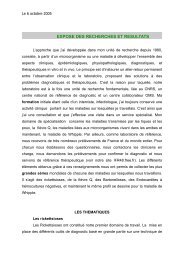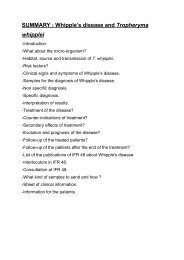Bartonella quintana
Bartonella quintana
Bartonella quintana
- No tags were found...
Create successful ePaper yourself
Turn your PDF publications into a flip-book with our unique Google optimized e-Paper software.
6. Fournier PE, Lelievre H, Eykyn SJ, et al. Epidemiologic andclinical characteristics of <strong>Bartonella</strong> <strong>quintana</strong> and <strong>Bartonella</strong>henselae endocarditis: a study of 48 patients. Medicine(Baltimore) 2001; 80:245-51.7. Clinical features (bacillaryangiomatosis)Bacillary angiomatosis is proliferative vascular diseaseoccurring preferentially in immunocompromised subjects,mostly during HIV infection. Etiologic agents of bacillaryangiomatosis are B. <strong>quintana</strong> and B. henselae. Variousorgans may be involved, including the skin, the liver, thespleen, the bone marrow and lymph nodes. Cutaneouslesions of bacillary angiomatosis may be unique or multiple,superficial or deep. Superficial lesions may be red, purple, oruncolored. Deep lesions are often uncolored. Oral, anal,intestinal mucosa, as conjunctive may be involved. Theprincipal differential diagnosis of bacillary angiomatosis isKaposi sarcoma.B. <strong>quintana</strong> is responsible for sub-cutaneous lesions, bonelesions, and liver lesions (hepatic peliosis) as lymph nodeinvolvement is more typical of B. henselae.Picture 6 cutaneous lesions of bacillary angiomatosis




